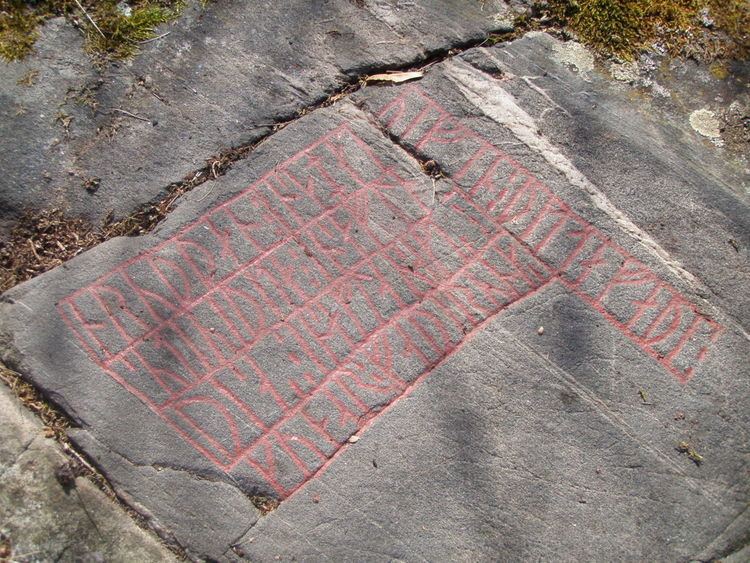 | ||
In Germanic paganism, a vé (Old Norse) or wēoh (Old English) is a type of shrine or sacred enclosure. The term appears in skaldic poetry and in place names in Scandinavia (with the exception of Iceland), often in connection with a Norse pagan deity or a geographic feature. The name of the Norse god Vé refers to the practice. Andy Orchard says that a vé may have surrounded a temple or have been simply a marked, open place where worship occurred. Orchard points out that Tacitus, in his 1st century CE work Germania, says that the Germanic peoples, unlike the Romans, "did not seek to contain their deities within temple walls."
Contents
Etymology
Vé derives from a Common Germanic word meaning sacred or holy, cf. Gothic weihs (holy), Old English wēoh, wīg (idol), German weihen (consecrate, sanctify), German Weihnachten (Christmas).
Toponyms
Examples of -vé appearing in toponyms after the names of Norse gods and goddesses:
Eight old farms in Norway have the name Vé (in Flå, Norderhov, Ringsaker, Sande, Stamnes, Tveit, Tysnes and Årdal). It is also common as the first element in compounded names: Vébólstaðr "the farm with a ve"), Védalr ("the valley with a ve"), Véló ("the holy meadow"), Vésetr ("the farm with a ve"), Véstaðir ("the farm with a ve"), Vésteinn ("the holy stone"), Vévatn ("the holy lake"), Véøy ("the holy island").
The name of the former Finnish city of Vyborg, located along the trade route from Scandinavia to Byzantium, is also considered related.
